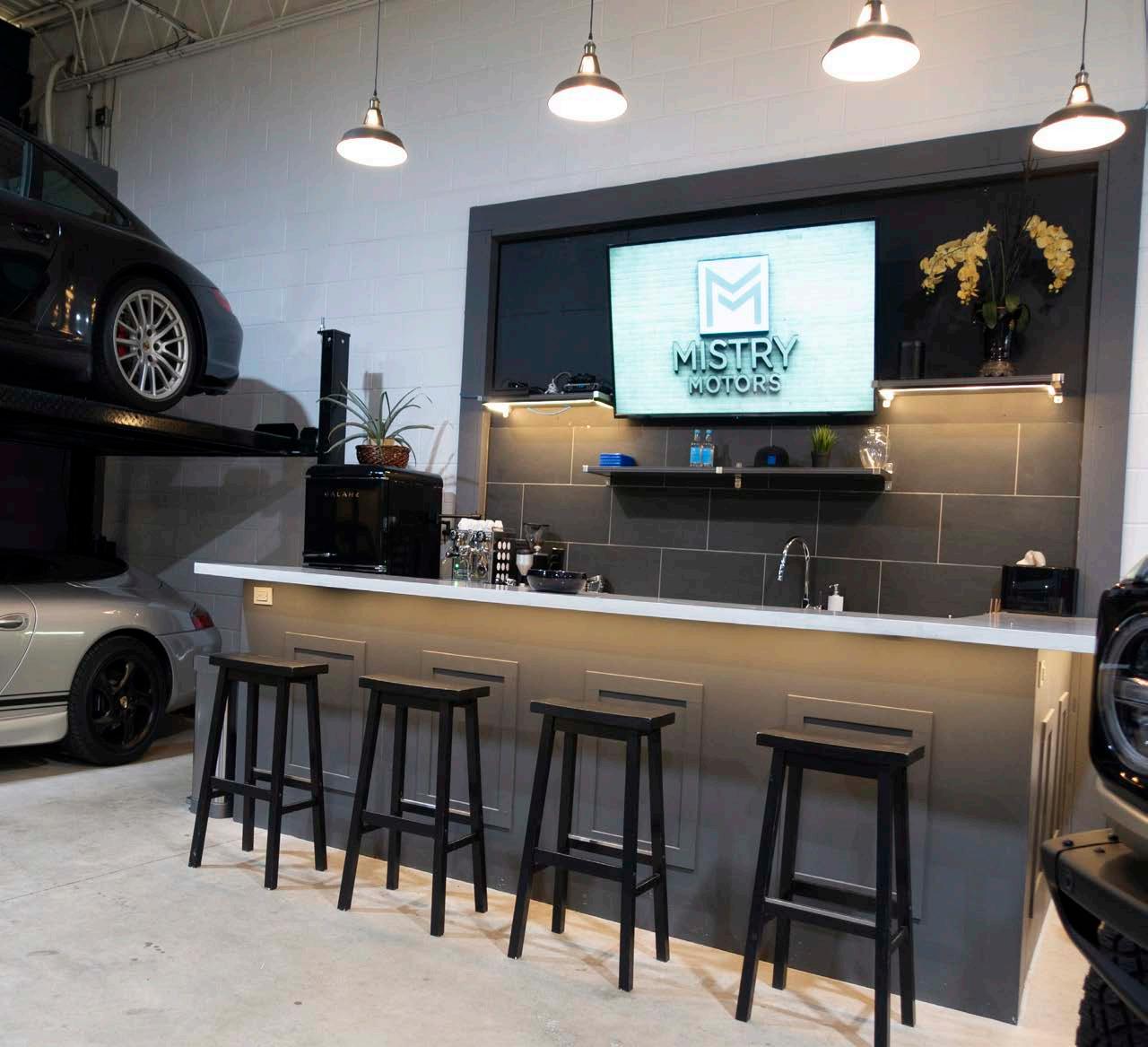
THE OFFICIAL MAGAZINE OF THE USED CAR DEALERS ASSOCIATION OF ONTARIO FALL 2023 THEONTARIODEALER.COM THE ONTARIO VOLUME 11, ISSUE 4 UCDA YOUR CONNECTION TO ONTARIO’S USED CAR INDUSTRY SUCCESSION PLANNING /08 HOW TO BECOME A BETTER BOSS /14 PLUS DEALER PROFILE: Mistry Motors Leasing & Customs /18 > INSIDE:








Contact us to find your local rep! 25 YEARS Serving Dealers Across Canada. Hybrid/ Electric Vehicle Road Hazard Peoples Choice Warranty Comprehensive Warranty Including Battery Coverage. Powersports RV Motorized & Non-Motorized Covering Land and Marine Powersports. Travel Trailers. A,B & C Motorhomes. Park-Models. Automotive Basic Powertrain Coverage from Bronze up to Our Exclusionary Comprehensive Titanium Warranty. Road Assistance. Key Replacement. Tire & Rim. Comprehensive Extended Warranties Tailored to Our Customers Needs. Seamless Customer Service. Expert Sales Representatives.

ASSOCIATION OF ONTARIO
230 Norseman Street, Toronto, ON M8Z 2R4
Tel: 416.231.2600
Toll Free: 1.800.268.2598
web@ucda.org
ucda.org
Publication Mail Agreement #41890516
ONTARIO DEALER
is published by
Laservision Graphics Ltd. four times a year.
130 Industry Street, Unit 36, North York, ON M6M 5G3
EDITOR
Gina Monaco
Tel: 1.647.344.9300 or 1.289.456.4617
gina@ontariodealer.com
Direct: 416.360.0797
Office: 647.344.9300
Advertising Inquiries
Shannon Coleman slk.coleman@yahoo.ca 647.269.4191
DESIGN thrillhousestudios.com CONTRIBUTORS
Chris Chase, Ronda Payne, Bill Sherk, Angela West
If you are interested in having your personal opinion heard, contact the editor at gina@ontariodealer.com

 Angela West
Angela West
Angela West
Angela West
Angela West
Angela West
We
USED CAR DEALERS
ADVERTISING SALES
The Driver’s Seat Jim Hamilton The Law Matters Jim Hamilton Tech Talk Angela West Dealer Profile Ronda Payne Trends Chris Chase The Common Lawyer Justin M. Jakublak Old Car Detective Bill Sherk 05 07 16 18 22 24 27 IN THIS ISSUE Fall 2023 FEATURED STORIES The publisher of The Ontario Dealer reserves the right to turn down any advertising or content submitted to it. The Used Car Dealers Association of Ontario and the publisher accept no responsibility for claims or statements made by advertisers in this publication or by the independent authors of articles appearing in this publication. All statements and opinions appearing in this publication are those of the writers themselves and are not to be construed as reflecting the position or endorsement of the Used Car Dealers Association of Ontario or the publisher. PUBLISHER’S NOTE
have resolved our supply chain issues and we're back to our regular publishing schedule of four times a year. Thank you for your continued readership and support. THE ONTARIO VOLUME 11, ISSUE 4 UCDA 08 11 14 29 Succession Planning By Ronda Payne How to Keep Your Best Salespeople By
How to Become a Better Boss By
Hire Better Post-COVID By
VOLUME 11, ISSUE 4 | 3
Navigating contract disputes: liquidated damages and carbuyers’ rights
Occasional contract disputes between car buyers and dealers and salespersons are not uncommon. One area of contention often revolves around cancellations, where a car buyer seeks to terminate a contract and the dealer aims to retain a portion of the deposit to cover incurred costs. This scenario can be complex, involving considerations of liquidated damages and car-buyers’ rights and the legislation that governs such disputes.
Understanding liquidated damages
Liquidated damages refer to an agreed-upon sum of money specified in a contract that serves as compensation in the event of a breach. In motor vehicle sales, this provision is often included to safeguard the dealer’s interests in case a customer decides to cancel the purchase.
Ontario’s legal framework
Section 50 of the Motor Vehicle Dealer’s Act (MVDA) grants crucial consumer protection specifically as it relates to the right to cancel the contract if certain critical information has not been accurately disclosed. This includes the total distance driven and disclosures regarding the vehicle’s history and previous uses. The right to cancel the contract persists for a period of 90 days. In cases where a consumer exercises this right, the act outlines the steps that can be taken to facilitate a smooth and just resolution.
Ontario’s Consumer Protection Act, 2002, offers consumers certain rights and protections when engaging in transactions with dealerships. The act outlines that any term in a consumer agreement that attempts to waive or negate a consumer’s statutory rights is void. Thus, it’s crucial for dealers to ensure their contracts comply with this legislation to avoid disputes.
Dealer’s right to retain deposit
If a car buyer cancels a contract, the dealer may have grounds to retain a portion of the deposit as compensation for any incurred costs. These costs must be legitimate and directly related to the preparation, customization, or servicing of the vehicle in question.

Transparent communication and documentation
To avoid contract disputes, open and transparent communication between dealers and car buyers is crucial. Clearly outline the terms and conditions, including any potential liquidated damages, in the contract. Additionally, maintain thorough documentation of any expenses incurred due to the cancelled transaction.
Integrity in the motor vehicle industry
In Ontario’s motor vehicle sales industry, contract disputes surrounding cancellations and deposit retention can be navigated effectively by understanding the legal framework, communicating clearly, and adhering to consumer rights. By taking proactive measures and seeking fair resolutions, stakeholders can maintain trust and integrity within this dynamic industry.
Contact OMVIC
Stay up to date on the latest guidelines for dealership sales operations at omvic.ca. Contact our dealer support team at dealers@ omvic.on.ca or call 1-800-943-6002 ext. 4 if you have any questions.
Follow OMVIC on social media to stay up to date on the latest news.
Instagram: @OMVIC_Official
Twitter: @OMVIC_Official
Facebook: Ontario Motor Vehicle Industry Council (OMVIC)
LinkedIn: Ontario Motor Vehicle Industry Council (OMVIC)

THE DRIVER’S SEAT
Management
 By James Hamilton, Interim Manager and Legal Services Director, UCDA
By James Hamilton, Interim Manager and Legal Services Director, UCDA
“UNEASY LIES THE HEAD THAT WEARS A CROWN.” Shakespeare, Henry IV, Part 2
It’s tough to be the boss. The guy or gal who opens the place in the morning, turns off the lights at the end of the day, and spends the time in between, and on weekends, worrying about keeping it all running and keeping everyone gainfully employed. Has it ever been harder than it is now to do all that?
One thing we can all agree on, is that the success of any venture hinges on the people. Your dealership’s success will depend on your ability to attract, retain and promote the best staff. Unless you are a one-person operation (in which case you are the key to your own success), this will be the most important job you do, bar none. The fact is good people like to work with good managers. The labour market is tight, we all know how hard it is to find good employees, but if you are not a good manager, that crucial bit of business may be lost before the game even starts.
Good leaders judge themselves first, and most harshly, not staff. That is to say, before you even begin to concern yourself with how good a job everyone else is doing, you must be fair and honest with yourself about how good a job YOU are doing.
What does that look like? It means taking a full accounting of your ‘soft’ skills, and here are some examples of that.
1. While it might seem counter-intuitive, a good leader knows how not to try to do everything. Some people say what made Ronald Reagan an effective President of the United States of America was not that he was the smartest guy in the room, but that he hired people who were. He trusted them with the tasks he knew he was not the best at, in other words, he was an effective delegator. Handled correctly, and with the proper oversight, this is a vital skill.
2. Can you motivate people? In order to do that, you have to know your people first. You need to spend time with your staff, see where their strengths are, and their weaknesses. You can exploit the former, and support the latter, but you must not try to force round pegs into square holes.
3. Involve staff in their own success. Don’t dictate edicts from on high, involve staff. Let them work with you to set their goals; this engages people in a way simply ordering them around will never do. Your employees will ‘own’ their achievements because they were involved in setting the markers out in the first place.
In order to really do that well you have to ...
4. ... Listen. Effective listening, the management gurus will tell you, is probably the most important soft skill of any good manager. The kind of listening we are talking about here is not just the auditory exercise of hearing what people say, but really reading between the lines to get to the meaning of what your staff are trying to tell you. This is what tells people you really
‘get them’ and actually care about what they have to say. This kind of listening will inevitably lead to much more meaningful give and take between you and your team.
5. Be clear about what you want. Don’t mix messages or over-complicate things. Don’t micromanage; you all have shared goals, or you should, so let your team find their way to those goals. Trust them not to need to be led by the nose. You hired them because they were smart ... right?
At the end of the day, human beings want to be inspired, not led, so include them. Ask your staff what they think, seek them out for their ideas, and don’t take offense if that includes suggestions that you could do something better! Show your people that you genuinely care about them, and they will respond accordingly by caring about what you care about. Be professional, reward good work, help staff when they miss the mark and resolve conflicts in a positive way.
A good manager will always turn a negative into a positive by turning mistakes into a teachable moment instead of the end of the world.
The reason the buck stops with you is because you are the boss, embrace that, don’t shy away from it. If your staff see that you share success with them, when things go well it’s down to the team, and when things go off the rails, as they will from time to time, that you accept responsibility, just like they do. The key is to include everyone in finding that golden path forward!
In addition to our regular articles, please enjoy the following articles:
• Fleet/Lease/Rental Market Trends
• Become a Better Boss
• How to Keep Your Top Salespeople
• Succession Planning
• Hire better Post-COVID
You can reach me anytime at j.hamilton@ ucda.org with any comments or suggestions for the magazine!
VOLUME 11, ISSUE 4 | 5
Are you looking to have your inspection completed for the
Digital Dealership Registration (DDR) Program?
We provide onsite inspections for both UCDA members ($149.99) and Non-Members ($199.99). In some cases, due to distance, the fees may need to be adjusted. Simply schedule an appointment and we will complete the inspection and submit the results.
Email or call us to schedule an Inspection
DDRInspection@ucda.org
416-231-2600 • 1-800-268-2598
The Ontario government developed DDR to allow dealers to register and plate vehicles at the dealership. This is meant to reduce the amount of time dealers spend running between the dealership and Service Ontario. Dealers that are interested in finding out more about the program can go to www.ontario.ca/digitaldealership.
THE LAW MATTERS
How Is That Our Fault?
 By James Hamilton, Interim Manager and Legal Services Director, UCDA
By James Hamilton, Interim Manager and Legal Services Director, UCDA
MORE AND MORE THESE DAYS THE LAW EXPECTS ADULTS TO ACT LIKE ADULTS AT WORK. It doesn’t seem too much to ask.
There is zero tolerance for workplace bullying, harassment and intimidation. Human rights are to be respected at work just as you’d expect outside that environment.
Some examples can be extreme. Take this bizarre news item involved an allegation that dealership employees in the Greater Toronto Area attempted to poison a fellow employee. It was suggested that the man’s water bottle had its contents replaced with engine coolant. Not unexpectedly, the fellow noticed pretty quickly that it wasn’t water he was drinking and the good news is, after seeking medical attention, he is fine. At last reading, the press reported charges had been laid against at least two people.
All of this got us thinking, what might the
dealership’s own exposure be here? Sure, the management did not actually pour engine coolant in someone’s water bottle, but did it create an environment, or allow one to develop, where such behaviour was condoned, ignored, or perpetuated? In other words, could the victim make a case that the employer was somehow “vicariously liable” for the alleged acts of these employees?
“Vicarious Liability”, in a legal sense, means “indirect legal responsibility”. As with many things in law, it is not clear when a dealer might be found liable for intentional wrongs committed by its employees.
Dealers need to consider the comments, not only of courts, but also tribunals, such as the Ontario Human Rights Tribunal, in drawing conclusions in this area. It is not untrodden territory. From the highest Court in the country, the Supreme Court of Canada, to the Tribunal which speaks to violations of the Ontario Human Rights Code, panels have considered these issues before. The kind of things adjudicators look for include:
• The role of the "directing mind" (in the case of a corporate employer)
• A sufficient connection between the intentional act and employment duties
• Does the act enhance the risk to the victim by, for instance, affording the perpetrator the opportunity to abuse his or her power (especially where the victim is more vulnerable)
• Does the act relate to the power or intimacy inherent to the business
It would appear mere opportunity to commit a wrong is not sufficient to impose
vicarious liability on an employer. There should be a strong connection between the employment and the “assault” such that the likelihood of the wrong was enhanced by a combination of job-created power and intimacy.
The Ontario Occupational Health and Safety Act requires all employers, including dealers, to have a workplace harassment policy. This is not just words, it is meant to translate into action and, as we have seen, it is meant to address very real problems in the very real world (despite how surreal this can all seem at times).
What does such a policy look like? Well it should address:
• Measures and procedures for workers to report workplace harassment
• What workplace harassment is and its sources
• That workplace harassment is unacceptable
• The employer's commitment to protecting workers from workplace harassment
• The consequences of behaviours covered by the policy
• How to report all incidents of workplace harassment
• A commitment (on the part of the employer) to investigate and deal with concerns promptly
Dealers need to be alert to ensure there is no connection between intentional wrongs committed by their employees and their employment duties. Even more important, dealers must ensure staff are well educated as to their rights and corresponding responsibilities under the Regulations and Codes that govern adult behaviour at work.
■
VOLUME 11, ISSUE 4 | 7
SUCCESSION PLANNING
By Ronda Payne

A NUMBER OF YEARS IN, WHEN A USED CAR DEALERSHIP IS THRIVING, thoughts of “what’s next for me” begin to come to mind. What is that next phase of life and what does it mean for the business?
Is the intent to turn it over to a family member? Pass it along through a sale to a budding employee? Sell it to the highest bidder? Or, have thoughts of the future even progressed that far?
Succession planning is a major and essential part of business growth and life’s constant progress. Just the idea of creating a plan for where the business will be in the future can bring up many questions rife with fear and uncertainty. There are many aspects to be considered in succession planning: family, financial, health – not to mention the emotions that come along for the ride.
8 | THE ONTARIO DEALER
The process of who
Chuck Seguin, president of Seguin Advisory Services helps with numerous automotive retail business elements such as business valuations, intergenerational transfers and succession planning for those in automotive retail.
“It’s emotional,” Seguin says of the process of creating a succession plan. “You have to look for who is going to be the successor. That’s the big thing.” Even if the successor is in mind, the process is indeed a process. And not a quick one at that.
“You can’t decide what you’re going to do on Monday and implement it on Tuesday,” he says. “Your business is worth a fair amount of money and you want someone who is going to manage it in a fair and efficient manner. In all probability, you’re going to remain a shareholder.”
As he says, everyone has an idea of when they will retire and what that will look like, but those plans need to have some flexibility built in. Plus, owners must keep in mind that succession planning isn’t retirement planning or estate planning. Each type of plan is different and has its own pieces to consider.
It’s time to start sharing all the things that make the business successful with the person who will be taking over – or, if that isn’t yet determined, at least start making notes of what has happened in the past, what is done in the present and what might be considered for the future.
“In a lot of instances, the difficult decisions about what goes on in the business don’t go outside of the owner’s head. Maybe he’s not sharing that information,” notes Seguin. “A lot of these guys are going to bed every night with millions of dollars of debt.”
Increasing sale value
While recording the elements of the business is essential, so too is ensuring the highest value possible. It doesn’t matter if the business will be passed along to a child, gradually sold to a strong internal manager or sold outright. Farid Ahmad, CEO of DSMA says ensuring a higher good will value comes from creating something unique. Much like a dealer wouldn’t sell just any car, in any shape, the business must be polished and detailed and ready to shine.
“There’s some simple things that a used car dealer should try to accomplish in order to increase their good will value,” he says. “They need something that distinguishes them from their peers, it can’t just be the name. It’s got to be something to do with your business practice or process.”
He points to things like including a used car warranty with every sale or a unique location. There must also be a modern, functional website, strong Google ratings and no complaints through the Better Business Bureau. It’s time to stand out from the rest but also be realistic about the value.
“If you’re looking to sell your used car business, you should be getting written testimonials and photographs of satisfied customers,” Ahmad says. “It’s all in the presentation. Their books have to be very clean and they have to show good recurring profit for them to maximize their value that can be verified by the buyer.”
The cars also need to be the freshest in stock, so get rid of high mileage, junky vehicles.
"everyone has an idea of when they will retire and what that will look like, but those plans need to have some flexibility built in."
Value realities
Often, what a dealer thinks, or hopes, their business is worth isn’t based in reality. Ahmad provides a basic formula to follow.
“As a guideline for value, a used car business for goodwill is normally between a one, to a two times the multiple of a dealership’s normalized annual net income for the previous five years,” he says. “So, if you consistently had $100,000 for the previous five years, [the buyer] would pay $200,000 [for the goodwill portion of the business].”
Companies like DSMA do valuations of used car businesses and the results might be a good surprise or a bad one. Because it’s easy to replicate what a used car business does, it doesn’t have

VOLUME 11, ISSUE 4 | 9
SUCCESSION PLANNING | RONDA PAYNE
the same intrinsic value as something like a new car dealership with a protected territory.
“You need to build your own unique brand. The more unique and the more it stands out, the more value your used car business will have,” says Ahmad. “They must be realistic in what they expect from their business. They should get their business properly valued.”
The process to create a saleable business should start about 12 months before the potential sale and even if it’s being passed to family, he feels the same basics apply.
“If I was going to sell my used car business to my son, a lot of what I said to you still applies,” he says. “I would want to pass an asset on to my children that I’m proud of. I wouldn’t want to pass on something with outstanding litigation or anything.”
He adds that using a professional business broker ensures more potential buyers and someone to handle the negotiations.

goes through is also part of the process. It’s important to consider the tax implications, have a lawyer to process the sale and ensure everything is as expected. It’s not a time anyone wants surprises.
What is next?
Ahmad makes an excellent point about knowing what the future may hold.
“If you’re going to sell, figure out what you’re going to do next,” he says.
No one wants to be the guy sitting in the recliner watching The Price is Right because they didn’t think about how they want to spend their days after the dealership. It may be that a gradual transition is best.
“There is always a value for having an intermediary,” he says. “I’ve seen Thrill
“That could be a five-year transition, it could be a two-year transition, it could be a 10-year transition,” says Seguin. “It has to be flexible to allow for changes in your personal habits. Hopefully your health remains positive. If not, you may need to change things to move ahead.”
Everything must be documented in terms of what needs to happen, who does what and what that will look like. Employees and customers need to be included in the transition as do banks and accountants.
“There has to be a documented set of steps,” he says. “The important thing to recognize is that your partner in this whole thing is the bank and the tax man. You may have a 30-year track record with the bank and they love you, but they don’t know your son from Adam.”
This is where training and job shadowing come in. Everyone needs time to adjust and grow comfortable with the switch to create a smooth transition.
“It requires the founder to gradually step aside and let the person who is taking over the business to gradually grow into the business,” he says. “They go to meetings together, they do everything together. You know you’ve got it when the bank starts calling your son instead of you.”
Succession planning is an emotional process and one that isn’t taken on lightly. Dealership owners need to be honest with themselves and others about what’s happening as well as the process and feelings that go along with it. ■

thrillhousestudios.com SUCCESSION PLANNING | RONDA PAYNE
different.
HOW TO KEEP YOUR BEST SALESPEOPLE
By Angela West

IF YOU HAVE A GREAT SALES TEAM, THE NEXT SENTENCE IS GOING TO MAKE YOU NERVOUS.
Out of all your employees, your sales staff are the most likely to leave. According to a report from Cox Automotive, these departments have an
80% turnover rate, the highest for any department in the automotive industry.
Burnout, job dissatisfaction, long working hours and inadequate paythere are lots of reasons salespeople head for the door. You need to address all of them if you want to entice them to stay.
Keeping your top performers takes work, but it’s worth it. Sales are the lifeblood of your dealership. They’re responsible for interacting with customers, representing your brand, promoting your products, and ultimately driving your profits. If you find an employee who can do all those things well, they’re worth the investment.
10 TIPS FOR SALES STAFF RETENTION
#1 Offer Reasonable Salaries
With the ongoing labour shortage, it’s an employee’s market and sales staff are now in a position to ask for - and get - more. That puts the onus on businesses to keep up with (or out-do) what their competitors are offering. Think of it as an investment in the future of your business. The last thing you want in today’s economic climate is to lose a member of staff and find yourself on the hunt for a replacement. If your sales staff are good, offer them what they’re worth.
And don’t make it a one-time offer. Schedule regular salary reviews so your employees are motivated to succeed. You don’t need to blow your HR budget, but you do need to show staff that you’re prepared to reward them for good work, and that you empathize with the rising cost of living.
#2 Provide Opportunities for Training and Career Advancement
Good employees like to stretch their skills, and relish the opportunity to aim at achievable goals i.e. those that are realistic but also challenging. When you provide your salespeople with regular training opportunities, you’re also sending them the message that you’re invested in their career development and that builds loyalty.
#3 Create a Good Workplace Culture
If you want to keep your salespeople, make sure they look forward to going into work. The best way to do that is to build a welcoming and
supportive company culture. Nurture good relationships with, and between, your staff so they become friends and not just colleagues. It’s much harder to leave your job if it also means leaving your workplace buddies.
#4 Consider Perks
Salespeople are prone to burnout, so these staff members need a little extra support. Consider giving that support in the form of perks like wellbeing initiatives, more personal time and flexible schedules. Let your staff know what’s available to them, and how to access those programs or benefits.
#5 Give Them The Right Tech Tools
There’s an app for everything, and every office has a range of solutions to choose from to streamline workflows and increase productivity. Don’t let your dealership become the exception. Keep up with what’s available and make sure you’re always upgrading your software so your salespeople have the latest tech available whether they’re following up with customers, logging contracts, or scheduling meetings.
Don’t forget training. Your salespeople will need instruction on how to use any new or upgraded applications so provide courses where necessary. These tools won’t just make sales’ jobs easier and improve productivity, it also adds to your reputation as a thriving place to work, somewhere that’s cutting-edge and forward-looking.
#6 Schedule Regular Check-Ins
People don't quit out of the blue. There’s always a reason. The sooner you discover that reason, the more chance you have of changing their mind.
Stay ahead of the game and make sure you deal with an employee’s issue early so it doesn’t fester. Hold one-on-ones with your sales staff so they can voice their concerns and get them addressed quickly.
Ignore problems and you may fall victim to resignation contagion - where one employee leaves and it triggers a flood of other resignations. Avoid that domino effect by showing your sales team that you’re responsive and will take their complaints seriously.
#7 Carry Out Regular Performance Reviews
Performance reviews give managers the chance to reward those who are doing well, and better motivate those who are underperforming. The primary goal is to improve performance and productivity within your department, but it’s also a great way to motivate staff. Guide employees to do their best work and they’ll reward you with loyalty. People who take pride in their work are much less likely to quit.
#8 Encourage Participation
Entice your salespeople to stay by giving them a stake in big decisions. If you treat them like worker bees, kept in the dark and given orders from on high, they’ll never connect with your company and invest in its growth.
Instead, let them weigh in on the decisions that matter. And not just as a gesture, really listen to their perspective and give them a chance to show off their skills. This doesn’t have to mean hour-long meetings where everyone is shouting over each other, start by creating good communication channels so everyone knows how to submit suggestions and can bounce ideas off
12 | THE ONTARIO DEALER KEEP YOUR SALESPEOPLE | ANGELA WEST
each other without disrupting workflows.
#9 Effective Change Management
Given the economic rollercoaster of the last few years, dealerships have had to navigate a lot of changes. From pivoting to new products to switching up sales strategies, businesses have to be nimble at every level. Preparing your operation for changes and headwinds means also preparing your staff. No-one likes uncertainty and if your salespeople don’t feel secure in their jobs, they’ll start looking elsewhere.
Minimize the disruption by drawing up a change management plan. This should cover how to keep employees informed, how they can contribute, how their roles may change, and what to do to guide them through transitions. The best way to reassure your salespeople is to be transparent at every stage, keeping them informed on where your dealership is now, and where it’s going in the future.
#10 Learn from leavers
As much as you try to prevent it, staff will inevitably leave. The trick is to turn those departures into learning moments. Arrange an exit interview during which you can ask your employee why they quit, what you could’ve done differently, and their thoughts on their role and responsibilities.
Interviews should obviously be handled with care. At this point your salesperson has one foot out the door and may not be particularly motivated to discuss their tenure. Show empathy, practice active listening, and don’t get sidetracked by unhelpful grievances. Go in with a set agenda and maintain a positive approach. You can then take this exit interview feedback and use it to develop a retention strategy for future employees.
Ending Costly Turnover
High employee turnover can be devastating for dealerships. The cost of onboarding new employees can run into the thousands, even without factoring in the time and frustration of the hiring and onboarding processes. On average, a departing employee costs their company around $25,000, according to Gartner.
Invest that money in keeping the employees you have and skip the stress. Don’t be afraid to go the extra mile for your top workers, you’ll see the rewards in both the short-term and the long-term as they improve their performance, build your brand and close more sales. ■

VOLUME 11, ISSUE 4 | 13
Whether it’s your business to sell New cars or Used cars... it’s our business to keep all your insurance needs covered 825 Queen St. E., Toronto, ON M4M 1H8 TEL: (416) 778-8000 TOLL FREE: (800) 268-1424 www.bairdmacgregor.com Baird MacGregor Insurance Brokers LP Partnering with the UCDA and Pitcher & Doyle to Bring you Quality Insurance and Excellent Customer Service at Competitive Rates. KEEP YOUR SALESPEOPLE | ANGELA WEST
HOW TO BECOME A BETTER BOSS
By Angela West
AS THE OLD SAYING GOES, ‘EMPLOYEES DON’T QUIT JOBS, THEY
QUIT MANAGERS’. With the automotive sector hit by labour shortages, dealership leaders will have to up their boss game if they want to hold onto staff.
But being a good boss isn’t just about knowing the business and getting cars off the lot. Effective leadership requires a range of so-called ‘soft’ skills such as empathy, communication, trust, and creativity.
These qualities don’t just happen. Like any skill, they need to be developed and honed. Mindful managers understand that getting the best from their team means empowering them with the best leadership possible.
MUST-HAVES FOR MANAGERS
Effective communication
Good communication is the foundation of every employee-boss relationship. Done well, communication streamlines tasks, motivates employees, and improves productivity. Bad communication, on the other hand, causes chaotic workflows, employee dissatisfaction, and poor customer service.
Be mindful of how you get your message across to staff. When assigning jobs, be sure to be fully transparent with clear expectations around what you need and the processes involved. Make sure everyone knows what your goals are for a specific project, and how they can help you achieve them.
It’s also a good idea to schedule regular check-ins with your team.
Communication is a two-way street and your employees need to feel heard. One-on-ones give them the opportunity to voice any concerns they have and offer feedback. Don’t just phone these in. Actively listen and offer realistic solutions. And don’t forget to thank them for speaking up. You want your employees to feel like they can come to you for support, so acknowledge it when they do.
Good communication between employee and boss is crucial, but it’s also important to foster networks within and among teams. Make sure your employees have the processes in place to collaborate effectively. Your departments don’t work in silos. If the customer service team can’t talk to the technicians, you’ll lose business as follow-up appointments and maintenance checks get lost in the shuffle.
Empathy
Times are tough and managers have a lot on their plate. But don’t make the mistake of putting profits and performance before people.
Good bosses have a people-centric mindset. They prioritize employee wellbeing over the rush to close a sale or hit a deadline. As a boss, you have to stay alert to employee burnout, watching for red flags like absenteeism and productivity dips. Handle these with care, giving your staff space to share what’s wrong and finding sensitive solutions.
Empathy is especially important when working with your millennial or Gen Z employees. This cohort is more attuned to the need for a healthy work-life balance and will have different priorities from their Gen X colleagues. A good manager need to learn how to balance the different demands of the demographics within their department, changing their approach to meet their employees where they are.
Managers set the tone of a business so be aware that you are at least partly responsible for your company’s culture. Make it a place where people feel supported and empowered, not worn down and under pressure.
Empathy goes hand-in-hand with trust. Show your employees that you trust them to do their job by giving them responsibility and stepping back to let them reach their potential. And encourage them to trust you - with their complaints, concerns, and other issues they may be wary of sharing.
Innovation and creativity
Any boss can read a rule book, good bosses know when to think outside the box.
When your staff come to you with an issue, don’t just consult company policy, explore opportunities for creative problem-solving. This will inspire your team to take the initiative and become more flexible in how they handle roadblocks.
14 | THE ONTARIO DEALER
It also gives you some room to maneuver. Creative bosses are flexible bosses who know when to abandon an idea that’s not working and instead put their energy into something new. If you need to change direction, make sure you keep your team informed every step of the way so they can offer their own perspective and help you brainstorm.
You’ll also want to get creative in how you reward your department - mixing things up with employee retreats, fun days, happy hours, or other team-bonding activities.
The automotive industry may not seem like a creative field at first glance, but don’t miss any opportunity to get your staff thinking in new ways. Encourage them to use their imagination as well as their technical skills in areas that need creative thinking such as product development, sales strategies, and marketing campaigns.
PUTTING GOOD LEADERSHIP INTO PRACTICE
When putting your hard earned leadership skills into practice, managers should be aware of management pitfalls that can derail even good bosses.
One of the most common is micromanaging. It’s tempting to look over an employee’s shoulder and double-check their work, especially if they’re a new hire, but don’t give into that temptation.
Nothing kills employee motivation quicker than feeling like you’re being watched and monitored. Hire the right people, trust them to do their job. It’s that simple.
Many managers concentrate on individuals, getting to know each employee well but forgetting that those workers are part of a team. Yes, you need to know and trust every member of staff, but it’s also important to be mindful of their role within their department so you don’t overburden one person and leave another sitting doing nothing.
Your team relies on each other as well as you, so delegate fairly and keep a close eye on who is pulling their weight and who might be dragging the others down.
If you do have a poor performer, deal with it quickly, before the whole team suffers. Good bosses delegate responsibility, but they also insist on accountability. Sensitively and discreetly tackle undesirable behaviors, while rewarding those who are putting in the effort.
THE LEADERSHIP RIPPLE EFFECT
The best thing bosses can do is lead by example. Improve yourself before improving your team - show empathy, build trust, have humility. Take the lead when necessary but give yourself room to step back and let your employees shine if they’ve earned it.
These leadership traits will have a ripple effect throughout your team. Researchers from Stanford found that replacing a bad boss with a good boss improved staff productivity by 12%.
This jump in performance was due to management creating opportunities to mentor and teach their employees, as well as modeling positive behavior in the workplace.
Your staff will take their cues from you, so be the employee you want them to be - caring, attentive, responsive and dedicated. This servant-style leadership doesn’t just improve staff retention and satisfaction, it will also have a positive impact on how your dealership serves its customers.
Good leaders make good employees and good employees deliver the kind of exceptional customer experience which puts your company ahead of competitors - 92% of dealerships believe customer experience will play a vital role in their business’ future growth, according to a recent study from Accenture.
If you don’t have happy staff, you won’t have happy customers. That’s a problem given that dealerships depend on brand reputation and customer experience. You’re in a people business, so nurture your people. ■


VOLUME 11, ISSUE 4 | 15 BECOME A BETTER BOSS | ANGELA WEST
TECH TALK
By Angela West
HERE’S THE LATEST ON WHAT’S HAPPENING IN AUTOMOTIVE GADGETS AND APPS.
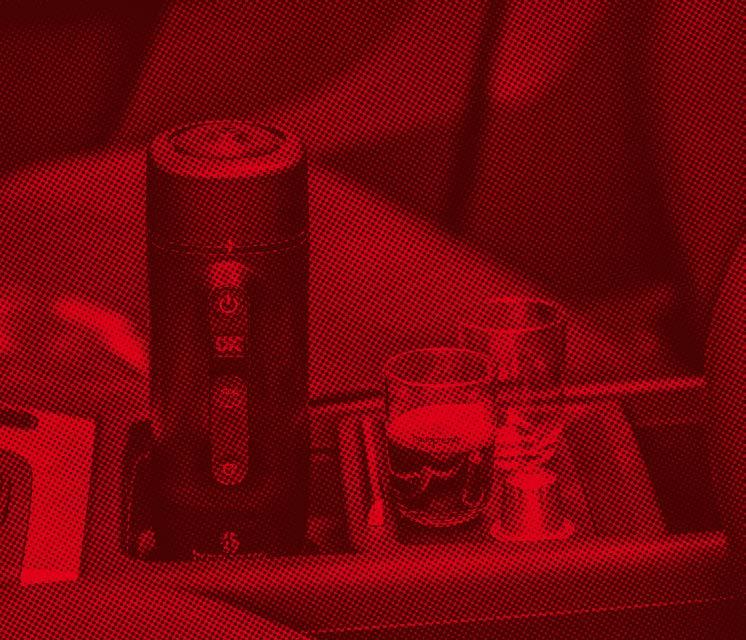
Boost your signal
You may be heading into the wintery woods but you still need to stay connected. Whether you need to stay in touch with the office, make sure the kids can reach you, or just have your phone handy in case of emergency, a signal booster amps up coverage so you don’t have to worry.

Time to bring out the sweaters, check the furnace, and top up your supplies of pumpkin spice - fall is here and the cold weather’s coming.
Summer’s over, but that doesn’t have to mean the end of outdoor fun. From offroading to fall camping, there’s still lots you can do to get out there and enjoy the changing seasons…as long as you’re prepared. When the temperature drops and the snow flies, you need to be ready for anything.
Read on for the best automotive gadgets for fall and winter adventures - they’ll keep you cozy, help you stay safe.
The WeBoost Drive X Cell Phone Signal Booster works for all phones and all Canadian carriers. It’s suitable for both 4G and 5G and there’s no wifi needed. It covers most of a vehicle's interior, providing an enhanced signal for up to four devices, including smartphones, tablets, and hotspots.
And it’s really easy to install. The antenna attaches to the roof of your car via a magnetic mount while a secondary antenna goes inside the car, attached to a seat or your dashboard. Everything you need is provided in the kit, including an installation and troubleshooting guide.
For more information on the WeBoost Drive X Cell Phone Signal Booster, visit wilsonamplifiers.ca
Protect your tires
Picture the scene - it’s a dark, wintery night. The snow is falling. And you’re stuck by the side of the road with a flat tire.
Don’t be that driver. Be the driver who keeps a digital tire inflator in the car so you don’t have to worry about nasty surprises like punctures. The Fortem Digital Air Compressor is compact, easy to use, and inflates tires in minutes to get you back on the road as quickly as possible.
The lightweight unit has a built-in LED light so you don’t have to scramble around in the dark, and it will automatically shut off when the tire’s full so you won’t accidentally over-inflate it. Just plug it into the 12-Volt power outlet in your car, attach the hose to the tire, set the PSI, and hit the switch. When you’re not using it, the air compressor fits snugly into a zippered case and is small enough to store in the car without losing any precious trunk space.
For more information on the Fortem Digital Air Compressor, visit gofortem.com

16 | THE ONTARIO DEALER
HANDPRESSO AUTO
Get cozy in the car
Sleeping under the stars is great on a clear night, but you may want somewhere a little more snug when the temperatures drop. The AutoTrends 12V Automotive Air Mattress Kit gives you the option of bedding down in the back of your SUV in cozy comfort.
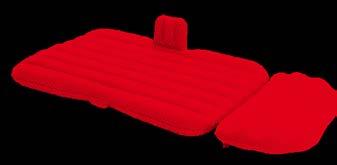
Clean up mess
Fall road trips can get messy and muddy, especially if there are kids or pets in the mix. Keep your seats and car mats free of dirty paw prints and smudges with Folex’s Instant Carpet Spot Remover.
The Nite Ize is one of those multifunctional tools that’s handy for several reasons - the powerbank doubles as a phone charger, while the storage bag it comes in can be used as a light diffuser to further soften the glare.
The durable PVC mattress inflates to fit the back seat of most cars, including SUVs, cars, and MPVs. An air pump is included with the kit so you can just throw it into the car and set it up when you arrive. Also included are detachable pillows and a headrest so you can turn your vehicle into a homey den with plenty of cushions for back and head support. The whole kit packs into a portable bag so it won’t take up valuable trunk space.
For more information on the AutoTrends 12V Automotive Air Mattress Kit, visit canadiantire.ca
Caffeine on the go
No need to abandon your morning routine while you’re on the road. Enjoy a freshly brewed coffee with the Handpresso Auto portable espresso maker.
A life-changing gadget for caffeine-addicts, this amazing tool whips up cafe-quality coffee in minutes. You can use either Nespresso pods, or your own favourite ground coffee - just add the coffee to the top compartment, plug the Handpresso into your car’s adaptor, press the Brew button, and steaming espresso pours out (make sure you have your cup ready!).
The Handpresso has a sleek, flask-like, design and sits neatly in your coffee cup holder so you don’t have to worry about it rolling around the car. It’s ideal for a quick coffee break while on the road or sitting by the fire.

The beauty of this must-have cleaner is that you don’t need to rinse the stain first (tough to do when you’re in the woods with limited water supplies!). It’s a waterbased, non-toxic spray that’s safe around pets and children. Just spray it on and watch it work. The cleaner is suitable for all colourfast materials and it even works on grease stains - so if your kid drops their s’mores in the car, it’s all good.
For more information on the Folex Instant Carpet Spot Remover, visit folexcompany.com
Let there be light
As winter draws in the days are getting shorter so you’ll need a powerful night light if you’re going to be out late this fall.
The Nite Ize Radiant 314 rechargeable lantern can illuminate your car or camper for up to 90 hours and offers three different settings so you can turn it down to a gentle amber glow when campers start heading to bed.
The built-in carabiner clip makes it easy to carry, hang, and move around. Don’t worry if you drop it in a puddle - the lantern is drop-resistant and waterproof, making it the perfect, rugged camping buddy.
For more information on the Nite Ize Radiant 314, visit niteize.com
Fall flavour
We saved the best for last. Good news fall fans, there’s a way to make your vehicle smell like your favourite season all through winter!
The Spiced Pumpkin Smart Scent Car Vent Clip Air Freshener from Yankee Candle is the perfect gift for anyone who loves this time of year.

The portable air diffuser clips onto your vehicle’s air conditioner vent where it pumps out that sweet seasonal smell. The scent lasts 30 days and can easily be refilled by detaching and replacing the inner compartment.
For more information on the Spiced Pumpkin Smart Scent Car Vent Clip Air Freshener, visit yankeecandle.com ■
For more information on the Handpresso Auto, visit handpressocanada.ca

VOLUME 11, ISSUE 4 | 17
TECH TALK | ANGELA WEST | 17 NITE IZE RADIANT 314
DEALER PROFILE
Unassuming warehouse with great personality
By Ronda Payne
PRAKASH MISTRY DOESN’T WANT TO DO THINGS
THE WAY THEY’VE ALWAYS BEEN DONE. He’s got a creative mind combined with a strong sense for automotive business and brings those traits to Mistry Motors Leasing & Customs in numerous ways.
Not many people would think to include a café and a barbershop in a warehouse showroom in Mississauga. In 2016, Prakash was the person who brought that vision to life. He wanted to create something unique and dispel all the old myths about used car sales.
“Instead of the traditional franchise store model, I decided to create a dealership concept of my own as an independent dealer,” he says. “My whole

18 | THE ONTARIO DEALER

Mistry Motors Leasing & Customs

idea behind having the used car store was to have something different. I wanted more of a casual space where you bought a car. I wanted it to be a more relaxed environment.”
So, he looked for a warehouse where he could bring his vision to life. “People could come look at cars, talk about cars and maybe buy a car there,” he says.
The barbershop? Well that just came along naturally with the funky, downtown, car-talking vibe. It’s called Sharp Lines Barbershop.
“It was a natural fit,” he says. “There’s a lot of guys that come here, they look and they get their car washed and the barbershop just fit with the whole theme of a casual hangout.”
These ideas started to crystalize when Prakash began working in the automotive industry. He did a high school co-op work experience with Whiteoak Ford in Mississauga and stayed on for his summer job. He realized it was a field he really enjoyed and wanted to pursue. To advance his knowledge, he took the Automotive Business Program at Georgian College.
“For my first college co-op, I asked the owner at White Oak if I could try sales
and he let me. I was 21 at the time,” he says. “I killed it. I did really well.”
After college he was given a job at Whiteoak and stayed there, in advancing roles, for 17 years until he reached the limit of where he could take his career. All that time, he kept building on the ideas of what he might do in the future.
“Finding the right space was difficult,” he admits. “The minute I saw it, I went after it. It was an old, run-down transmission shop, but the square footage was nice and it was right on the corner of a main street. It’s not much from the outside, but when people come in and see it, they are surprised.”
Now, seven years later, the 12,000 square foot warehouse is getting a bit tight. Averaging 15 to 20 cars, turn is fast; usually within 30 days.
Many of the cars are known to the team of 6 at the dealership as they are often end-of lease returns arranged through Mistry Motors. When Prakash did commercial fleet leasing, many of his leasing customers wanted to stay with him, so he offers leasing arrangements for new vehicles together with manufacture connections. He does that time-consuming administrative and finance leg-work.
And if that weren’t enough, the business also does detailing and provides customization through GTA Customs.
“Along with sales, it felt like there was a need for something more,” he explains. “I started GTA Customs. That’s where we do wraps, tints, coatings, basically everything aesthetic for your car.”
Customers can take advantage of these addons at the time of purchase or come back later to get their car tricked-out. It might be a UV protection film or a specialty coating to create a matte finish.
He has a team of 11 at GTA Customs, plus there is also the barber. But don’t

20 | THE ONTARIO DEALER
go looking for a barista at the cafe, the sales team had to learn how to make decent mochas, lattes, cappuccinos and espressos on their own.
Like some other dealerships, Mistry Motors also sells and stores customer tires. This, along with all the other activity at the warehouse has Prakash saying they are bursting at the seams! The nearly 100 sets of tires now get stored off-site to ensure room for cars and socializing.
He doesn’t engage in any formal advertising. There are typical vehicle listings through Kijiji, Autotrader and on the website, along with custom work that is showcased on Facebook and Instagram, but that’s it. There isn’t any need for more because the busy location is great and customers keep coming back.
“The location is a big thing, but also, there’s really no sales pitch here, there’s no pressure,” he says. “A car that we have here, we’ve checked it, we’ve vetted it, we’re confident with you buying it. If it’s a fit for you, great. If not, you’re welcome to hang out or let us know what you would like and we’ll find it.”
People have told Prakash that they didn’t feel like they were in a typical car buying experience when they visited Mistry Motors. They hung out, had a coffee, talked and bought a car.

“It’s fun,” he says. “It’s not your usual salesperson and sales manager going back and forth. We just talk over coffee. I think we’ve really built everything through word of mouth and repeat business.”
He says most customers end up being repeat buyers of two or three cars. Some many more than that.
“It’s the comfort, the easiness. They enjoy it,” he says. “If that one person buys a car and feels great, they’re going to tell tons of people.”
Helping others feel great is important to Prakash. He’s been involved in the charity, Inside the Dream Formal Attire Program, for high school students unable to afford formal attire for their graduations. Although on hiatus since

“We’d put on a day in a local convention centre,” he explains. “Students would come and shop free for their outfits and there were seamstresses on site. We haven’t yet picked up where we left off, but we did that for six or seven years.”
He also supports local activities like soccer teams and other kids’ events.
Prakash always knew he wanted to work in the automotive retail industry and bring something different to it. He’s done that, with a unique car shopping experience in an open, casual atmosphere. ■
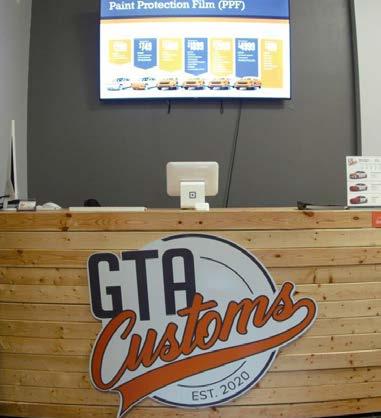
VOLUME 11, ISSUE 4 | 21 DEALER PROFILE | RONDA PAYNE
COVID, he is looking forward to its return.
TRENDS
By Chris Chase
LABOUR DISPUTES ARE THE BIG NEWSMAKERS for the second straight edition of The Ontario Dealer. Since we last updated you on the state of the Canadian wholesale marketplace, labour union Unifor has successfully negotiated new collective agreements for its workers at the Detroit Three – Ford, GM and Stellantis.
Stellantis is the most recent of the trio to reach a deal with Unifor, which announced its members had ratified an agreement early on October 30, following a strike that lasted a matter of hours; a similar scenario had played out earlier in October during Unifor’s negotiations with GM. Ford was the only Detroit Three player to avoid strike action following about a month of negotiations that ended with a deal in late September.
That those deals were reached with so little drama was good news to an industry still reeling from a summertime port workers’ strike in B.C. that disrupted the importation of new vehicles and other goods on Canada’s west coast.
Wholesale values continue their steady decline
According to Canadian Black Book (CBB), used car values fell by nearly 0.5 per cent in the last week of October, marking 18 months of steady declines for the overall market; during that time, truck and SUV prices have fallen further than those for cars.
As of September 2023, CBB’s wholesale value vehicle retention index was at 156.7, its lowest point since peaking at 165 points in March 2022.
Still, CBB says cross-border buying is still propping up values as U.S. dealers shop Canadian used-vehicle auctions to take
advantage of a relatively low Canadian dollar. As of the last week of October, the Loonie was trading at US$0.728, down marginally compared to our last marketplace update.
Canada needs to jump on the semiconductor manufacturing bandwagon
Canada’s tech industry is pressing the federal government to bolster this country’s semiconductor industry. According to an October 2023 report in the Ottawa Business Journal, the Semiconductor Industry Leadership and Innovation Canada Action Network (SILICAN) believes “Canada has a ‘once-in-a-lifetime opportunity’ to set up the country for success in the semiconductor field.”
SILICAN says that if Canada doesn’t put in place a strategy to attract investments from semiconductor manufacturers, the country could be left out of “a burgeoning part of the global economy … forecast to reach $1.3 trillion in sales by 2030.”
In July, the Council of the European Union, an organization made up of government ministers from the EU’s 27 member states, passed the Chips Act, which, in a press release, the Council said will “strengthen Europe’s semiconductor ecosystem.” This set of regulations was designed to “create the conditions for the development of a European industrial bast in the field of semiconductors” and “attract investment, promote research and innovation and prepare Europe for any future chip crisis.”
With its Chips Act, the EU wants to double the continent’s share of global chip manufacturing by 2030; according to a 2023 Semiconductor Industry Association state-of-the-industry report, Europe’s semiconductor market share was around 9 per cent in 2022.
Like the similarly named CHIPS and
Science Act the United States passed in 2022, the new European bill aims to accelerate the construction of semiconductor manufacturing factories that will reduce Europe’s industrial reliance on chips produced in other jurisdictions.
While legislative developments like these promise a buffer against future supply chain shortages, the next challenge could be finding enough skilled workers to staff future chip plants.
In July, chip maker TSMC announced it was delaying the opening of a new chip factory in Arizona by a year – to early 2025 – due to a shortage of skilled workers.
And according to 2023 report by the Semiconductor Industry Association (SIA), U.S.-based semiconductor manufacturers could face a shortage of around 67,000 workers by 2030. The SIA recommends reforms to the U.S. immigration system so that semiconductor makers can attract “the best and brightest in the world, including foreign students … in STEM fields” and the country can maintain its nearly 50 per cent global semiconductor industry market share.
Bank of Canada still fighting high inflation
In early October, Bank of Canada Deputy Governor Nicholas Vincent told the Chamber of Commerce of Metropolitan Montreal that the central bank is still figuring out how to correct for disruption caused by the pandemic. He said the money Canadians were able to save during pandemic lockdowns “supported strong consumption,” which “created what economists call a state of excess demand . . . driving up prices and wages.”
He said that “if recent pricing behaviour settles into a new normal, it could complicate our return to low, stable and predictable inflation.”

22 | THE ONTARIO DEALER
In mid-October, Global News reported that about half of business owners who responded to Bank of Canada surveys said they would continue to pass price increases on to consumers “amid fears the Bank of Canada’s inflation fight has stalled.” Many of those businesses said they expect it will be more than three years before inflation reaches the central bank’s target of 2 per cent annual inflation.
One third of businesses say they expect a recession in the next year, a belief fuelled by slowing sales growth; meanwhile, consumers are less optimistic, with more than half saying they believe Canada will enter a recession in coming 12 months.
In September, the Bank of Canada reported that the country’s national inflation rate hit 4 per cent in August, up from 3.3 per cent in July, due to higher gasoline prices. That 4 per cent rate is double the central bank’s current target;
June 2023’s 2.8 per cent inflation rate is the lowest Canada has seen in more than a year.
Despite that upward trend in the inflation rate, Bank of Canada Governor Tiff Macklem says the bank’s interest rate hikes have been helping curb inflation. However, he told the Financial Post that “the fight against inflation is not over. We need to be prepared for ongoing volatility.”
Macklem attended an early October meeting with Canada’s International Monetary Fund (IMF) counterparts in Morocco, where he said the Israel-Hamas conflict that erupted October 7 could affect the global economy, but that “it’s too early to tell, and it really depends on to what extent this escalates.”
In that Bank of Canada survey, 39 per cent of homeowners who responded said their mortgage payments are close to or already

With National Bank, you can benefit from prime lending solutions to help you achieve your sales objectives, enjoy competitive benefits and do business with experts who understand your situation and financial needs:




above what they can afford.
On October 25, the Bank of Canada held its trendsetting overnight interest rate at 5 per cent following a year of rapid rate hikes, a decision the bank attributes to a slowing economy and indications “that supply and demand … are now approaching balance.”
Still, economists say consumers should not expect a return to the low interest rates they enjoyed before the pandemic. On October 27, David Macdonald, a senior economist with the Canadian Centre for Policy Alternatives told CP24.com that the overnight rate could fall back to between 2 and 3 per cent, but cautioned consumers not to get too hopeful.
“That’s a ways off. That’s not next year,” Macdonald said. ■



















VOLUME 11, ISSUE 4 | 23 TRENDS | CHRIS CHASE
Contact us: 1-877-290-1280 nbc.ca/retail-financing
National Bank, a proud partner of UCDA
A team of Business Development Managers on the road every day and all year round
Steering dealerships towards success with a personalized touch
A team that will take care of your clients and accompany them throughout their journey with National Bank.
›
›
›
THE COMMON LAWYER
Time for Change – The Future of Consumer Protection in Ontario
 By Justin Jakubiak and Bree Pierce
By Justin Jakubiak and Bree Pierce
CONSUMER PROTECTION IS DUE
FOR AN UPGRADE. The law has been unchanged for the better part of 20 years. The current law, the Consumer Protection Act, 2002, ("CPA") is not without its flaws and can be quite confusing. The goal of the CPA is to "support a fair and competitive marketplace where consumers can make their own choices without being subject to unfair business practices." However, it is somewhat bulky and is not reader friendly, with rights and obligations divided by type and industry. The intention of the CPA and its impact can often end up in a conflict, impeding business and setting unrealistic expectations on all parties.
Within our practice we have noticed an upward trend of "over-protection" –an extreme approach that puts an unreachable standard on businesses.
Perfection, or peril. We can give you two examples from ongoing matters we are involved with.
The first involves a car dealer client who, in the ordinary course, pulled a CarFax report for a potential purchaser. The report showed a fairly substantial accident, about $20,000 in damage, but only about $1,500 in repairs. Two weeks later, the purchaser pulled the trigger and bought the car.
Approximately eight months later the purchaser went to resell. When a further CarFax was pulled during this transaction, it revealed that the repairs, and the damage, had been significantly more that the previous report indicated and that this information was available after the date of the first CarFax report, but before the vehicle was delivered. The purchaser sued our client. One of the purchaser's arguments is that an updated CarFax should have been pulled and provided to the purchaser just prior to delivery. Is that reasonable, or an extreme interpretation of a dealership's consumer protection obligations under the law? The matter is still ongoing.
We also just wrapped up a 7-day License Appeal Tribunal hearing relating to a Private Career College matter.
Our client, a relatively new trucking school, had been largely left to their own devices since opening in 2020. COVID had impacted the schedule
of inspections that ordinarily would have been conducted by agents of the Ministry of Colleges and Universities to ensure compliance with the relevant legislation.
Our client had been working with their assigned Ministry inspector to ensure their record keeping practises were in line with the relevant requirements. They followed the inspector's guidance and received her approval on most of their administrative practises. Notwithstanding her approval, the next inspector came around two months later and told them they were way out of compliance on several fronts.
When our client raised the inconsistency in standards to the new inspector, the response was radio silence. There was no follow-up, no clarification, and no further guidance. Five months later, they received a Notice of Immediate Suspension and a Notice of Refusal to Renew Registration!
A big focus of the hearing was the idea of consumer protection: the administrative aspects of the relevant legislation were designed to protect the

24 | THE ONTARIO DEALER

consumer, ie. the student. The standard imposed on our client, however, was perfection. The Ministry argued strict compliance with the legislation was mandatory and context was irrelevant. To the Ministry, it didn’t matter if a previous inspector had okayed the practice, nor did it matter that the Ministry had failed to provide the same level of guidance other schools received: the legislation said what it said. The consequence: stripping our client of their livelihood. We of course appealed and are awaiting the decision.
These cases are just two of many, but fortunately, the end might be in sight.
Revolutionizing Consumer Protection
Back in 2019, the government of Ontario first recognized the need to update consumer protection legislation. The "Rebuilding Consumer Confidence Strategy" was designed to be a comprehensive review of the CPA. It would update the CPA to reflect our new modern age. Scary to think that 2002 is practically ancient history when you think about the marketplace technology and innovations that have emerged in the past 20 years!
Over the past few years, there have been a series of consultation papers, proposals, and research conducted by the Government to understand what needs to change. The focus of this consultation has been to understand how best to enhance consumer protection and reduce the burden for businesses in general, while addressing specific problems with greater efficiency.
All of this has culminated in Bill 142, Better for Consumers, Better for
Businesses Act, 2023. The goal of the Bill is ultimately to repeal the Consumer Protection Act, 2002 and replace it with the Consumer Protection Act, 2023. The Bill was introduced on October 23, 2023. It has some wide-reaching impacts that will affect this industry, among many others. Some key highlights are below.
Contract Requirements
The Bill proposes to make several changes to the contents of consumer contracts. The CPA at present divides contracts into different types: future performance, time share, personal development services, internet, direct, remote, and reward points. If your first thought in trying to understand what (or why) those categories are what they are is HUH?, you are not alone. The Bill proposes to create one universal set of rules to govern all types of contracts, with some limited exceptions. This is designed to make it easier to comply: these core rules will be written in clear, simple language and recognize our "digital-first" marketplace, where more and more contracts are entered into online rather than in person.
The Bill also updates the disclosure requirements of information to be provided to consumers. The form of disclosure remains the same ("clear, comprehensible and prominent"), but that information must now be delivered in a manner "likely to come to the consumer's attention." These terms cannot be hidden within a contract or not easily accessible.
The Bill also seeks to improve consumer rights by changing the ways in which contracts can be amended. Amendments are currently permitted, but the Bill would require the explicit
consent of the consumer, with some narrow exceptions. Continuations and renewals of contracts would likely be captured by this proposed change.
On the flip side, the Bill proposes to prohibit certain terms. There are three key things that would be prohibited:
• terms that prevent consumers from posting negative reviews or comments, including clauses stating that a business can bill a consumer if it considers the consumer to have disparaged the business.
• clauses that purport to limit a business’ liability if a product fails.
• clauses that mislead a consumer about their statutory rights.
With respect to terms on statutory rights, this includes any terms that might suggest to consumers they do not have the right to pursue consumer protection claims in Ontario Courts.
Under the proposed changes, if any of the prohibited terms were included, they would be void and unenforceable and permit the consumer to cancel the contract within one year.
Clearer Definitions of Unfair Practises
A significant change proposed by the Bill is to be more explicit with respect to what is considered an "unfair practise" by providing some additional examples of unconscionable representations. That list would be expanded to include the following:
1 Taking advantage of a consumer as a result of the consumer’s inability to protect their interests because of disability, ignorance, illiteracy, inability to understand the language of a contract or similar factors.
2 Charging a price for goods or services that grossly exceeds the price at which similar goods or services are available from similar suppliers.
VOLUME 11, ISSUE 4 | 25
3 Entering into a consumer contract with a consumer, if the person doing so knows or ought to know that the consumer is unable to receive a substantial benefit from the subject matter of the contract.
4 Entering into a consumer contract with a consumer, if the person doing so knows or ought to know that there is no reasonable probability that the consumer will be able to pay the full price charged for the goods or services.
5 Including terms in a consumer contract that are so harsh, oppressive or adverse to the consumer that the terms of the consumer contract are inequitable.
6 Including terms in a consumer contract that make the contract excessively one-sided in favour of someone other than the consumer.
7 Subjecting a consumer to undue pressure to enter into, amend or terminate a consumer contract.
8 Using control of a consumer’s goods to pressure the consumer into renegotiating the terms of a consumer contract.
9 Charging a consumer for assistance obtaining any benefit, right or protection to which the consumer is entitled under this Act, unless,
before the consumer agrees to pay the charge, the person discloses,
i. the entitlement’s existence and direct availability to the consumer, and
ii. the cost, if any, the consumer would be required to pay for the entitlement if the consumer obtained the entitlement directly.
Many of the above terms are of particular relevance to the auto industry, especially with respect to lower income consumers. It may put more of a burden onto the dealer to verify the finances of their customers. It may require disclosure of spiff agreements insofar as the consumer bears any of the cost.
Increased Penalties
A final significant change proposed by the Bill is the cost of non-compliance. The Bill proposes to double the applicable fines. For individuals, the fine is increased from $50,000 to $100,000; for corporations, up from $250,000 to $500,000.
The Bill also contemplates triple damages for withholding refunds. If a consumer is entitled to a refund and it has not been provided within 15 days, the consumer has the option of taking that business to Court. If they do have to go to court, the consumer is entitled to recover three times the refund amount.
Who is Benefitting from the Bill?
While the Bill may sound like it favours the consumer, there are many aspects to it that work in a businesses' favour. It clarifies and simplifies a business' contractual obligations, making it easier for all parties to understand. It provides additional clarity to what sort of conduct could cause a business to run afoul of the prohibition on unfair practises. Effectively, it makes it easier for a business to understand what it can and can’t do, and for a consumer to know their limits with respect to privacy legislation.
There is no clear answer yet for what the transition period will look like if the Bill is to come into place – that is, no indication if the provisions will apply retroactively or not. We will keep you posted on what this might mean for your business.
Justin is a Partner with Fogler, Rubinoff LLP and is recognized by the Law Society of Ontario as a Specialist in Civil Litigation. This article was written with Bree Pierce, an associate practicing in FR's litigation and automotive law groups.
This article is intended for general information purposes only and should not be relied upon as legal advice. Views and opinions are the authors alone and do not necessarily represent the views and opinions of the UCDA or Fogler, Rubinoff LLP. ■
26 | THE ONTARIO DEALER

THE OLD CAR DETECTIVE
1961 OLDS 88 LIKE NEW AGAIN!
By Bill Sherk
LEAMINGTON, ONTARIO, RESIDENT PAUL THIESSEN HAS A CAR TO BE PROUD OF : his beautiful cherry red 1961 Oldsmobile Dynamic 88 2-door hardtop with the famous “bubbletop” rear window, which right away reminded me of my mother’s 1961 Pontiac Laurentian 2-door hardtop with the same distinctive “bubbletop” rear window. Paul told me that GM rear
window was unique to 1961 except for a few hundred ’62 Chevrolet hardtops with that same rear window.
Paul has just completed a 15-year restoration on his ’61 Olds. In 2007, he spotted an ad for the car in the Journey with Olds magazine. The car was in Chicago and Paul went there to have a look. “It was pretty rough,” he recalls, “but it was about 95% all there.” Paul bought it and brought it home in his fully enclosed trailer to start the bodyoff restoration.
Paul estimates that the car had been off the road for about fifteen years. Minor items were missing: the panel under the rear bumper, the air cleaner, the inside sun visors, and other minor
items.
To start the restoration, Paul and his Dad lifted up the body so the chassis could be rolled out from underneath. The frame was sandblasted and painted by Damphouse Painting.
The body was sent to a local shop for the necessary body work while Paul proceeded to work on the suspension and drive train. His connection with the Olds Club of America was very helpful in rounding up the parts he needed.
Ron Elford in nearby Essex worked on the heads and valves, the block was machined and balanced by Seifker, and the transmission rebuilt by Paul Poirier
VOLUME 11, ISSUE 4 | 27
in Windsor. It is now a 200R4 3-speed automatic with overdrive. The stock rear end has been rebuilt along with shocks and other suspension parts.
The car still has the original 394 cubic inch V-8 now fully rebuilt with an Offenhauser intake with two 4-barrel carbs and dual exhausts. Lots of chrome under the hood was done by Plating Master in London. When Paul opened his hood, I was glad I was wearing my sunglasses!
The interior was done by a company in Oregon that supplied all the original upholstery. The all-steel dashboard was completely restored by Louie’s Collision on Oak Street West in Leamington. The dash has an upgraded Wonder bar radio. Press button and it goes to next station.
Louie’s Collision was started by Louie King, a local body man at our local GM dealer in the summer of 1958 when he was driving a beautiful gleaming black 1953 Olds 88 convertible! Maybe that car is still around.
When Paul completed the restoration of his ’61 Olds, he drove his car to Lansing, Michigan, in June to attend the annual All Olds Meet which attracted over 600 Oldsmobiles! I asked Paul if any of those cars were the same as his. He told me there were three 1961 Olds Dynamic 88 2-door hardtops but his was the only one restored to original. Another was in original unrestored condition and the other one was highly modified.
We could say Paul’s car is 99% restored. The inside of the trunk needs work and the car is still missing its inside sun visors. Paul says one part of the car will never be restored. His firewall still has its original paint!
PHOTO #1:
Paul Thiessen’s beautiful 1961 Olds Dynamic 88 2-door hardtop after a 15-year restoration.
PHOTO #2:
Paul’s “bubbletop” 1961 Olds looks great from every angle.
PHOTO #3:
Grille centre bar from Olds Starfire. Paul is planning to add original Olds lettering to grille.
PHOTO #4:
Climb in and go for a drive!
PHOTO #5:
Lots of chrome under Paul’s hood!
PHOTO #6:
Sign on wall in Paul’s garage. ■

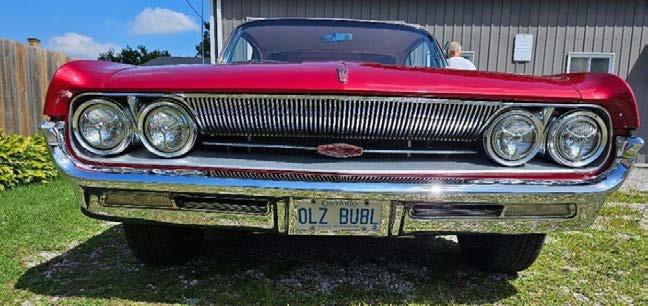



28 | THE ONTARIO DEALER
PHOTO #2
PHOTO #3
PHOTO #4
PHOTO #6
PHOTO #5
HIRE BETTER POST-COVID
By Angela West
HIRING WELL HAS NEVER BEEN MORE IMPORTANT FOR DEALERSHIPS.
Canada’s automotive sector is in the midst of a hiring crisis as devastating labour shortages continue to impact the industry. A recent study from the Motor Vehicle Retailers of Ontario found that there are currently 3,000 vacancies in the automotive technician trades alone and the outlook is even more pessimistic as the association predicts that the shortage will last through the next decade.
But it’s not all bad news. You can avoid and overcome staffing shortages by hiring smarter. Optimizing your recruitment and onboarding practices will help you find and keep talent, ensuring that you’ve built a loyal workforce of people who will grow alongside your business. These workers will contribute to the success of your dealership over the long-term as they nurture their own skills and further their careers.
STRATEGIES FOR HR DEPARTMENTS
Keep your hiring practices up to date
Even before you begin hiring, you need to think about updating your employment policies to reflect current market conditions. These aren’t normal times. Canadians are feeling the impact of the ongoing labour shortage, inflation, and the skyrocketing cost of living. Against the backdrop of these economic headwinds, employees want different things now than they did a decade ago and your hiring policy has to reflect that.
Like it or not, the balance of power between employer and employee has shifted. In a competitive market workers can demand more and get more so, whatever job you’re hiring for, be prepared to throw in perks that make your offer stand out like flexible schedules, salary reviews, better health benefits, and PTO.
Write a compelling - but accurate - job description
The first step in any hiring process is to write a job description. And that is more of an art than most people realise.
Job descriptions are a bit like movie trailers or book blurbs. You want to highlight the best bits so people are drawn to find out more. Think about why someone would want to work at your dealership - what are your company’s unique selling points? Try to convey something of your brand, culture, and company goals alongside the details of the position.
Selling your dealership to potential hires doesn’t mean exaggerating or hiding certain aspects of the job, of course, but put the benefits front and centre. It’s a competitive market out there so you have to make your business sound like a better place to work than anywhere else.
Once you’ve covered the highlights, clearly outline the skills and
VOLUME 11, ISSUE 4 | 29
qualifications the job requires so there’s no misunderstandings about what’s expected. Don’t worry about narrowing your scope of applicants - it’s better to get the candidates with the right skills from the outset rather than wasting your time, and theirs, discarding people at the interview stage.
When writing your job description, keep the three Cs in mind - make it clear, concise, and compelling.
Be strategic about where you advertise
Now that you’ve got your job description, where will you post it? Don’t simply rely on channels you’ve used in the past, treat every new job ad as its own entity and be mindful of where it can get the most attention, from the right audience.
Target your potential new employees by going where they are. If you’re looking for a younger audience for entry-level positions, you may want to explore social media as well as traditional job sites. The original professional network, LinkedIn, is tailor made for recruitment but newer options like Facebook are also worth considering - companies can post job openings for free directly from their business page.
Find out which channels are most popular in your niche and local area, and use those. Also think about your budget and where you can get the most value. Some sites charge for advertising, but you may find you get just as much reach from your Twitter account.
Interview better to hire better
CVs and cover letters can tell you a lot about a person, but not enough. That’s why you need to spend time interviewing your shortlist. Don’t be tempted to rush through this stage. Whether your dealership is doing two interviews - an initial HR screening, followed by a more in-depth reviewyou need to get both right.
Their resumes get candidates in the door, but now you have to get a feel for who they are. Will they fit the dealership’s culture? Are they committed or just looking for something to tide them over until the next job? Are they engaged - have they asked any questions or let you do all the talking? Do they know anything about your dealership?
Don’t just fire a list of pre-approved questions at your candidate. Leave room for the conversation to flow, and for them to contribute. Try to put them at ease, appearing confident but welcoming. It’s not an exam, or a test, this is a chance for both of you to get to know each other.
Give your potential hires somewhere to go
New employees don’t just want a good job, they also want the possibility of a better one. When interviewing your candidates, make it clear that there are opportunities for advancement in the position, letting them know that this is a role that won’t stagnate. Employees will have the chance to make it their own, climb the career ladder, and gain experience/qualifications as they move through the ranks of your business. The right candidates will find that an exciting and enticing prospect.
Maximize your onboarding processes
Once you’ve made your final decision, you need to get your new hire through the onboarding process as quickly and smoothly as possible. Don’t push them into their new role before they’re ready, take the time to ensure they know your team, your company, and your workflows.
Now’s the time to create a streamlined, efficient, and effective onboarding process if you haven’t already. Make sure everyone in the HR department knows their role and the processes involved, use tech tools where you can to eliminate time-consuming manual tasks, and build communication networks with

other departments. If you’re hiring for sales, for example, you need to be able to quickly ascertain exactly what sales wants, and hand candidates off to them once they’ve passed initial review.
There are a variety of onboarding applications available, and these are worth considering for busy dealerships who are continually recruiting. The benefit of these is that everything is consolidated. From advertising to training, every stage can be scheduled and documented within one platform, making life easy for HR teams.
Building resilience
The pandemic was a huge disruptor for all industries, and the automotive sector is no exception. Post-COVID, manufacturing was down, sales slumped, and workers dropped out of the labourforce. While the market is slowly finding its feet again, the rollercoaster of the past few years is far from over.
The best defense against these ups and downs is staff you can rely on. Your employees are the foundation of your business so it’s just common sense to take hiring seriously. You’re not just filling seats, you’re building a team that can take on anything so your dealership becomes more resilient and adaptable in the face of future threats. ■
30 | THE ONTARIO DEALER HIRE BETTER POST COVID | ANGELA WEST






The largest inventory in the industry at your door step
•160 NAPA stores for easy service and delivery
•Priority access to all parts for any year, make or model
•Lower reconditioning costs thanks to competitive pricing
•Brakes, batteries, shop supplies, tools & equipment and more
FOUR WINNERS EACH QUARTER GET A CHANCE TO WIN 1 OF 5 PRIZES!
CHOOSE FROM THE PRIZE POOL. A PRIZE VALUE OF $500 EACH.
Q4
To Qualify:
•$10,000 minimum net purchases in Q4
•Growth in 2023 Q4 compared to 2022 Q4
Qualifying Period: October 1 to December 31, 2023
•Market-leading loyalty rebates & program rewards
•Industry-leading parts and labour warranty
•Consolidate your multi-dealership network for an annual rebate
+GET A CHANCE TO WIN THE GRAND PRIZE: A NAPA PRIVILEGE TRIP!
THE WINNERS WILL PARTICIPATE IN A SPIN TO WIN AT THE END OF THE YEAR. A TRIP TO ORLANDO, FLORIDA FROM FEBRUARY 25 TO MARCH 3, 2024.
GRAND PRIZE

To Qualify:
•$40,000 minimum net purchases in 2023
•Growth in 2023 compared to 2022
Qualifying Period: January 1 to December 31, 2023
Did you win? Choose one prize from the following choices. Value of $500 each.

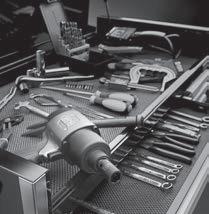
DO YOU WANT THE CHANCE TO BE A WINNER?


To enroll to this program, you just have to be an active UCDA member and open an account at your local NAPA store. No activation fee. It’s quick and easy!


RAPTORS OR LEAFS GAME TICKETS TOOL & EQUIPMENT CREDIT NAPA GIFT CARD GOLF FOURSOME NEW TELEVISION
TORONTO
NAPA
2023 IS YOUR YEAR TO WIN!
MARKETING PROGRAM - Q4
2023 MARKETING PROGRAM *Prizes are subject to change without notice, and may be replaced by an equivalent product. All 16 winners get a chance to win a NAPA Privilege trip for two to Orlando, Florida from February 25 to March 3, 2024. Conditions apply.
Contact Stephanie to join: scooneymann@uapinc.com
ULTIMATE PEACE OF MIND
for you and your customers

Your customers deserve the ULTIMATE Automotive Protection. Choose from our suite of programs that include ULTIMATE Automotive Warranty, Ultimate Tire and Rim, GAP (Global Asset Protection), 24/7 Roadside Assistance, and Global Glass Protection. No matter the vehicle or driving needs of your clients - Global has them covered! We offer new coverage levels and variable term options that include the latest factorybuilt parts and complete systems for ANY year, ANY make, and ANY model.
Global provides specialized coverage for Hybrid/Electric vehicles, Diesel, Electronic Hi-Tech, and Commercial Purpose vehicles. PLUS, with our Platinum Coverage, ALL parts are covered to match the original manufacturer’s full warranty, including Wear & Tear (on covered parts) and Seals & Gaskets. It’s more than just protection; it’s ULTIMATE peace of mind for you and your customers. Global Warranty is a trusted organization that has partnered with thousands of repair centres, serving over 2 million customers for 37 years.


32 | THE ONTARIO DEALER
GlobalWarranty.com
Established Canadian company since 1987
471 Waterloo St., London, ON, Canada N6B 2P4 | 1.800.265.1519 | 519.672.9356 | Fax: 519.663.8013 | Email: csc@globalwarranty.com











 Angela West
Angela West
Angela West
Angela West
Angela West
Angela West



 By James Hamilton, Interim Manager and Legal Services Director, UCDA
By James Hamilton, Interim Manager and Legal Services Director, UCDA










































 By Justin Jakubiak and Bree Pierce
By Justin Jakubiak and Bree Pierce





















